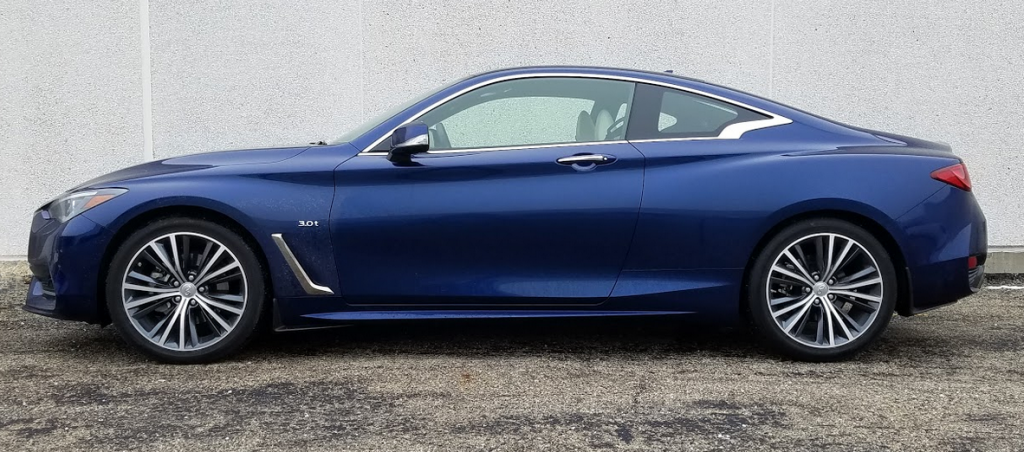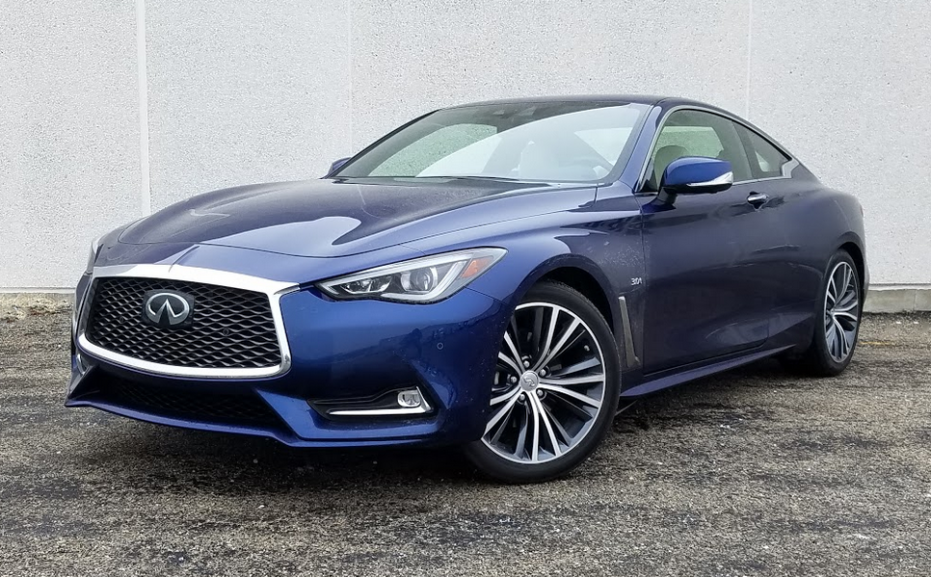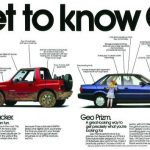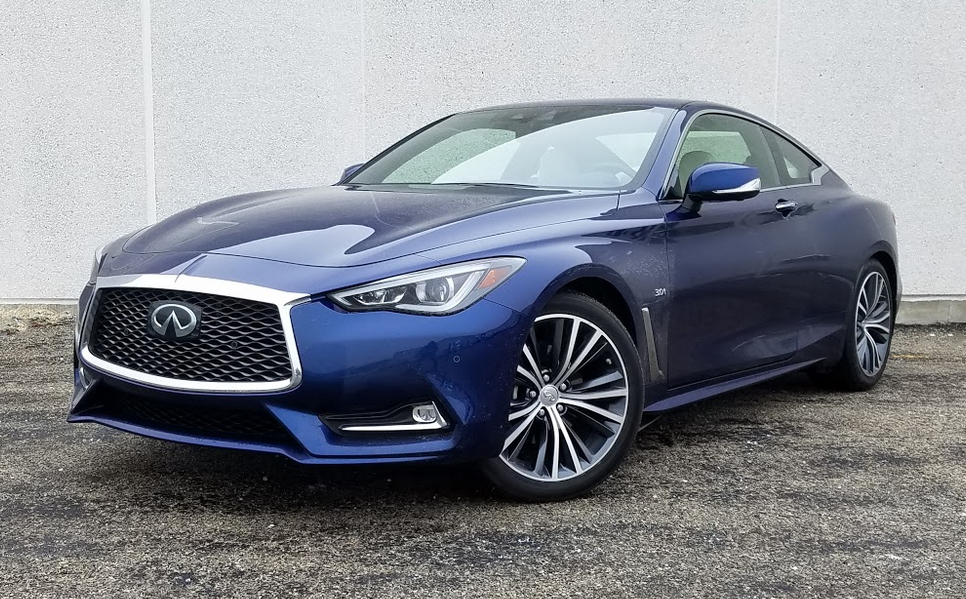
2017 Infiniti Q60 3.0t Premium AWD 
Class: Premium Sporty/Performance Car
Miles Driven: 247
Fuel Used: 13.2 gallons
Real-world fuel economy: 18.7 mpg
Driving mix: 65% city, 35% highway
| CG Report Card | |
|---|---|
| Room and Comfort | C |
| Power and Performance | B |
| Fit and Finish | B+ |
| Fuel Economy | C+ |
| Value | B |
| Report-card grades are derived from a consensus of test-driver evaluations. All grades are versus other vehicles in the same class. Value grade is for specific trim level evaluated, and may not reflect Consumer Guide's impressions of the entire model lineup. | |
| Big & Tall Comfort | |
| Big Guy | B |
| Tall Guy | B- |
| Big & Tall comfort ratings are for front seats only. "Big" rating based on male tester weighing approximately 350 pounds, "Tall" rating based on 6'6"-tall male tester. | |
EPA-estimated fuel economy: 19/27/22 (city/highway/combined)
Base price: $46,300 (not including $905 destination charge)
Options on test car: Intelligent Cruise Control ($1850), Direct Adaptive Steering ($1000), maple interior trim ($400), semi-aniline leather seating ($1350), Driver Assistance Package ($2250), Premium Plus Package ($3200)
Price as tested: $57,255
Quick Hits
The great: Smooth and refined power, upscale cabin
The good: Ride and handling balance
The not so good: Pricey option packages
More Q60 price and availability information
John Biel
Supposedly, the car as we know it is dying on the vine, with all the sunlight falling on crossovers instead—and among cars, coupes were pronounced dead a long time ago. And yet, what’s this? Why, it’s . . . a new coupe.[
Make that “sort of new.” After giving the Q60 a model year off, Infiniti welcomes the upscale two-door back for 2017. It’s been completely restyled on a core platform that is shared with the brand’s Q50 premium-midsize sedan. Gone, unfortunately, are a Q60 convertible and the option of a manual transmission. New is a choice of two turbocharged engines in place of one “old” naturally aspirated 3.7-liter V6.
Test Drive: 2015 Lexus RC 350 F Sport
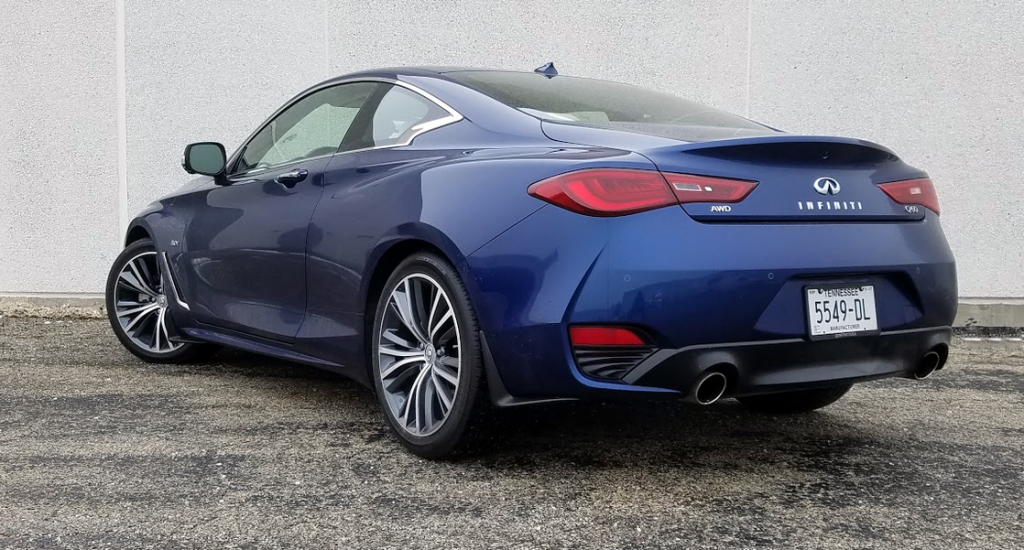
Consumer Guide® tested a middle-of-the-pack Q60 3.0t Premium with all-wheel drive. It slots in between the 2.0t models, offered in two trim levels and powered by a turbocharged 2.0-liter 4-cylinder engine, and the high-performance Red Sport 400 with an enhanced version of the twin-turbocharged 3.0-liter V6 found in the 3.0t. All come with a choice of rear- or all-wheel drive.
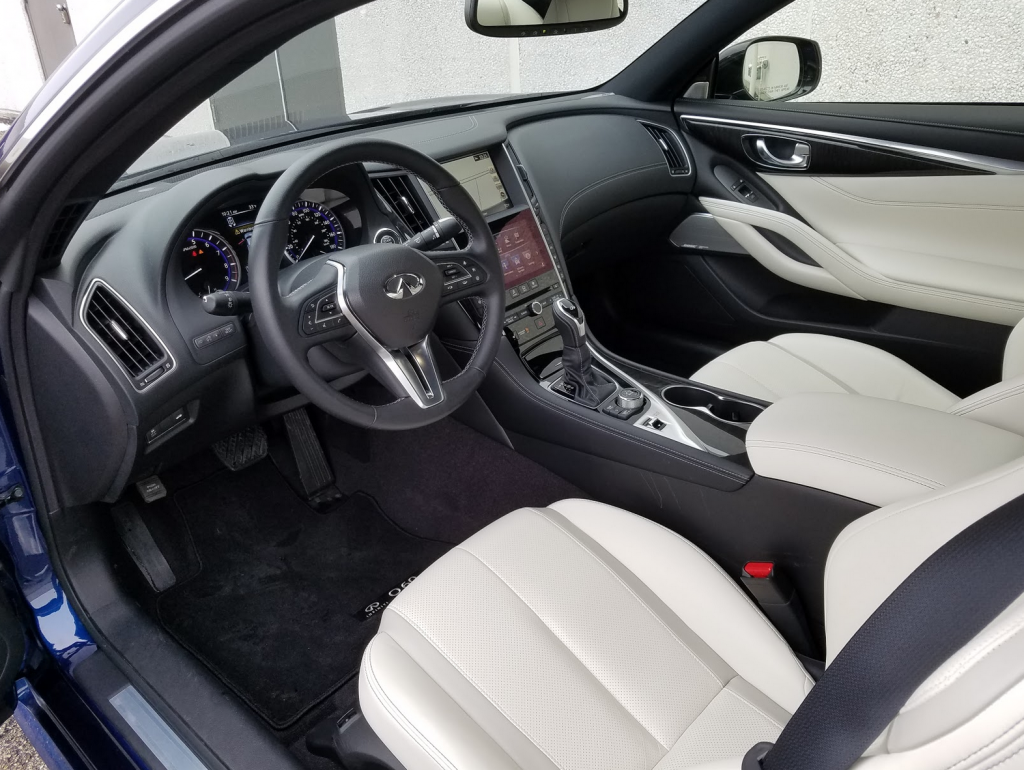
The test car had a base price of $46,300, which is $2000 more than the rear-drive variant’s starting tab. Standard equipment includes things like 19-inch alloy wheels, automatic LED headlights, leatherette upholstery, leather-wrapped steering wheel, dual-zone automatic climate system, heated exterior mirrors with integral LED turn signals, and a moonroof. Tech and entertainment items add up to a rearview camera, push-button starting, Bluetooth phone and streaming-audio connectivity, Bose 13-speaker audio system with voice-command capability, and satellite radio. You might be thinking, “No leather, no paddle shifters, or no power steering-wheel adjuster?” They’re standard in the 3.0t Sport (which also has some of the Red Sport’s performance goodies), and CG’s test car had leather seats and the wheel adjuster as part of its copious complement of options that ran the full price with delivery to a weighty $57,255.
All Q60s come with a 7-speed automatic transmission and a Drive Mode Selector with up to 336 possible settings for engine and chassis behavior. The twin-turbo V6 in the 3.0t is rated at 300 horsepower and 295 lb-ft of torque. It is very quiet when cruising and not much noisier under acceleration. Asking for a burst of power while at highway speeds demonstrates an obvious lag before the turbos fully grasp the situation and do their stuff—and they do it fairly well. At lower speeds the engine seems to react quicker to the throttle. The 3.0t AWD is rated by the EPA at 19 mpg in the city, 27 on the highway, and 22 combined, but this driver managed only 19.15 mpg after covering 106.9 miles, 63 percent of it in city-style driving.

Most of the time ride quality is smooth and unperturbed—and then you’ll hit a bump that feels like it’s punching back. (The sportier versions have an adaptive suspension.) Handling in the Premium model delivers fairly level cornering. The test car was equipped with Direct Adaptive Steering, a $1000 add-on that’s standard in Sport models. This second-generation “steer-by-wire” system has no mechanical connection between the steering wheel and the front wheels (except in the event of electronic failure), and allows variation in the steering ratio and effort. It does its job well. With the AWD, several snowy patches this driver needed to cross on his residential side street presented no obstacle.
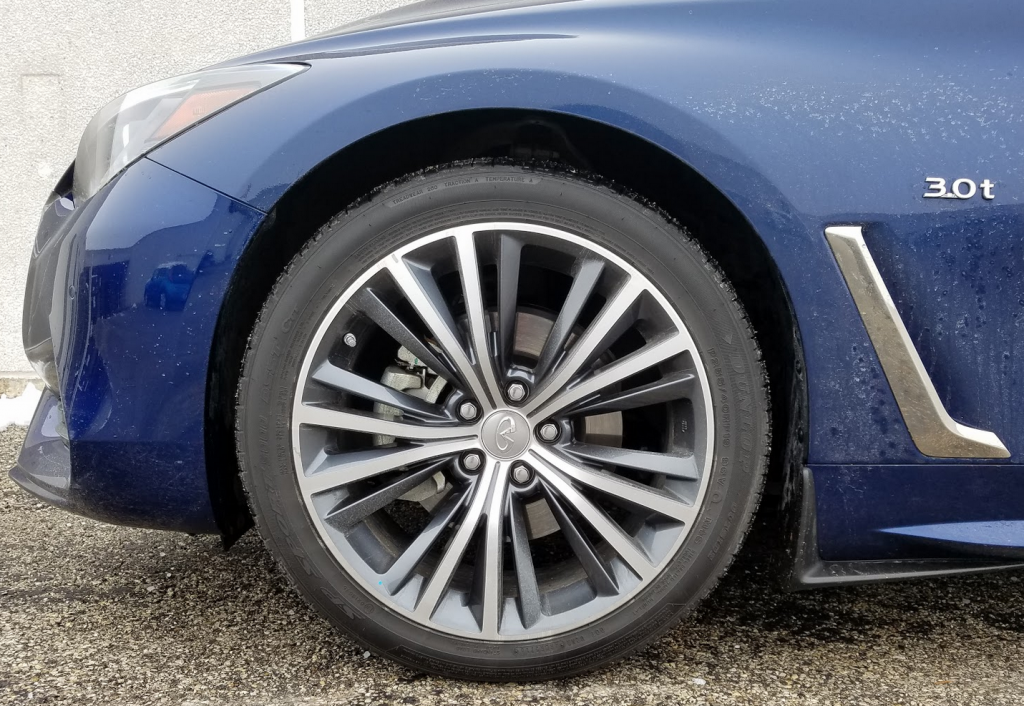
Personal-item storage is just all right. While glove box space is passable, the covered console box surrenders some room to the block that holds auxiliary and USB inputs. There are two uncovered cup holders in the console and two more in the space between the rear seats. Long door pockets serve the needs of front passengers; anyone who might be in back has a shallow open bin between the seats, plus pouches on the backs of front seats.
Trunk space is small and hampered by a high liftover. Items are essentially dropped in from above. On the plus side, the decklid swings fully vertical to make this process a little easier. Rear seats fold to add cargo space.
Additional luxuries (heated seats and steering wheel, for instance) and the various ubiquitous electronic safety technologies (blind spot, lane departure, forward collision, etc.) are all available in the Q60 Premium, but in packages at considerable extra cost. Luxury-class coupes like the BMW 4 Series and Audi A5 may feel somewhat more athletic than some Q60 models, and they are competitively priced. Still, the Q60 wins points for its distinctive styling, its genuinely luxurious feel, and its all-around refinement.
